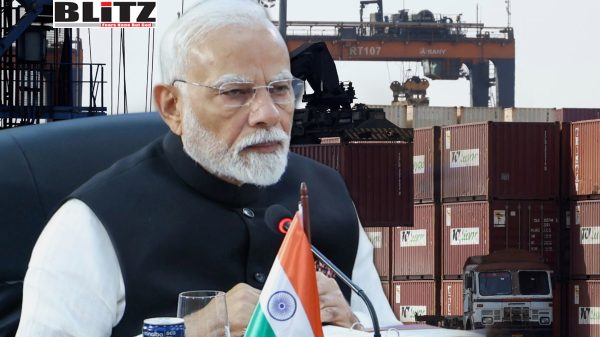Film Pathan showed the power of single screen
- Update Time : Monday, March 27, 2023

Shahrukh Khan’s film Pathan continues to shine for the fourth week at Delight Cinema located in Old Delhi. Although the crowd of people in the morning show is less, but they appear very excited.
At the interval, some people were seen coming out and enjoying snacks etc. while some people were engrossed in taking selfies with the film’s poster.
A similar crowd is also seen at Liberty Cinema in Karol Bagh, located some distance from here. Many couples came here to watch the film during the matinee show on Valentine’s Day.
In this era of multiplexes and over the top platform (OTT), where there was apprehension that the era of single screen cinema hall would end, blockbuster cinema like Pathan has given it life.
Rajan Gupta, owner of Liberty Cinema, says that after the shock of Kovid, theaters felt a return to normalcy. But due to lack of good films, there was a huge drop in the business. “After Pathan, it became clear that people were not coming to theaters because the films were not good,” he says.
Nine days after the release of Shah Rukh Khan starrer Pathan on January 25, all shows at Liberty were houseful.
“We are on the fringes and time will tell if we will start making profits again,” says Gupta. But what Pathan has done is show that good films on a larger scale are indeed essential. Even in multiplexes, Pathan’s business is more than all the films.
Raj Kumar Mehrotra, owner of Delight, says 2019 was the best year for him as 13 to 14 films crossed the Rs 100 crore box office mark that year and each gave him good business.
The year 2022 also got off to a good start with films like The Kashmir Files and Sooryavanshi. However, several flops in the last six months turned things sour. “But with Pathan there is a comeback and within three weeks we had a collection of Rs 1.10 crore, which is phenomenal,” says Mehrotra.
Single-screen businesses still hold on to the belief that they will hold their place in the changing entertainment ecosystem.
Gupta believes that a multiplex does not elicit the same crowd response that a single screen theater does. He says, “The single-screen audience can whistle and clap freely, regardless of who is sitting next to them and what they think.”
The prices are the USP of Single Screen. For example, the maximum ticket price in Delight is Rs 210. Most of these tickets are sold for around Rs 185 and the morning show costs just Rs 85.
Gupta owns another single screen theater in Ambala, Haryana. It has been closed since the pandemic. He says there is a gap between what the public can afford and want and what multiplexes can provide. He said that only single screen can fill this gap.
Also, single screens also try to entice the audience with the viewing experience as compared to multiplexes. Delight also functions as a multiplex after adding another smaller screen in 2006.
Mehrotra explains, ‘When multiplexes entered, films for a particular class disappeared from single screens. So, we thought why not build another 150-seat hall for a smaller audience.
Superhit films must come
Despite the success of Pathan, cinema owners say that a hit film cannot revive or change the fortunes of a single screen.
Nitin Datar, president of the Cinema Owners and Exhibitors Association of India, says that before Kovid-19 there were about 6,500 single screens including touring cinemas in the country. Some 20-25 per cent of these have not reopened after Covid.
According to distributors in Delhi, there are four single screen cinemas running in the national capital, while around 10 to 11 have closed in the past decade.
Datar says about 1,800 films are made in India every year in different languages. Out of these 250 are of Hindi. He says, “A single screen hit doesn’t matter because most of the films are flops. We need about 40 superhit films in a year to do good business and survive.
“Post the pandemic, even single-screen viewers have turned to OTT platforms that can be accessed through smaller screens, including smartphones,” says Datar. He said that in the pre-multiplex era when the business of single-screen theaters was booming, the average seat occupancy used to be up to 80 per cent. Now it may come down to 8-10 per cent.
Datar said, “We hardly make any money and the bulk of the profits are taken away by the big films that release. He hardly pays anything for single screens, unlike multiplexes, which get 50 per cent of the collections. Single screens get 10-15% of the total collections; The rest is taken by the distributors. Around 200 single screens stop their operations annually.
Single screen owners also point to lack of government support as the primary reason for their decline and see the conversion of traditional cinemas to multiplexes as a compelling alternative. Meanwhile, the number of multiplex screens in India is around 3,500.
Citing government apathy, Datar says, “The government in Delhi and Maharashtra does not allow cinema owners to do any other business. You have to maintain a small cinema, which is also causing loss. I don’t think single screen will last more than 10-15 years. The majority may have to be converted into multiplexes.
He said that various states had policies in place to help the rise of multiplexes, which included tax exemptions. “Instead of encouraging multiplexes in cities, the government’s policies should encourage more people to watch movies at affordable rates,” he says.
He said that change is a challenging task in itself. He says, “Most single screens were located in densely populated areas. No business is possible without parking facility. The cost of projector, screen and decorations will add up to around Rs 2 crore, making it not a viable investment if the occupancy increases by 20-25 per cent.
He suggests that there should be two to three screens with government subsidy. Larger, 1,000-seat screens can be converted to two screens, but those with a capacity of 600 are too difficult to convert into a multiplex.

















